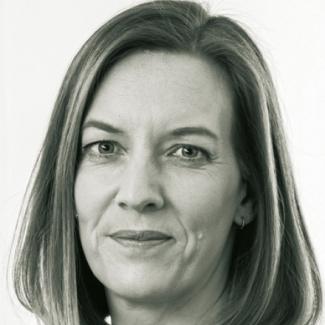Sustainable Development Goals
Closing the gaps
 kd
Around 800 million people still live in extreme poverty. This Rwandan cowherd is one of them.
kd
Around 800 million people still live in extreme poverty. This Rwandan cowherd is one of them.
The UN member states, represented by a record number of heads of state and government, adopted the document titled “Transforming our world: the 2030 Agenda for Sustainable Development” on 25 September at a special UN summit in New York. The SDGs replace the expiring Millennium Development Goals (MDGs) that provided guidance for international development aid over the past 15 years. It will come into effect on 1 January 2016. The agenda is the result of a two-year process of negotiations that involved a broad range of civil-society organisations. It aims to complete what the MDGs did not achieve.
According to UN data, around 800 million people still live in extreme poverty and suffer from hunger. Water scarcity affects 40 % of the world population and is projected to increase. Some 946 million people still practice open defecation. Gender inequality persists in spite of more representation for women in parliaments and more girls going to school. These are just some of the gaps that need to be closed.
The preamble to the post-2015 development agenda, recognises that “eradicating poverty in all its forms and dimensions […] is the greatest global challenge and an indispensable requirement for sustainable development”. It also states that the SDGs, comprising 17 goals (see box below) and 169 targets, go beyond the MDGs, because they address the root causes of poverty and pledge to leave no one behind. The MDG agenda was criticised for not sufficiently addressing disabled people, for instance, while the new goals explicitly aim to be inclusive. Furthermore, they recognise the key role of the private sector in pursuing and financing sustainable development, in partnership with governments and civil society.
Another important difference is that the new agenda applies to all countries rather than just the developing world. For industrialised countries it is particularly important to change consumption and production patterns. Furthermore, their current economic systems tend to foster inequality. Oxfam warns that the SDGs will be impossible to meet without policies enabling the poorest to benefit most from economic growth. According to the NGO’s research, “200 million people will be trapped unnecessarily in extreme poverty by 2030 unless poor people’s incomes grow faster than those of the rich”. Wealth does not automatically trickle down to those who need it most, Oxfam states, so appropriate policies need to be implemented. Other critics argue that the SDG concept does not break with the notion of economic growth as the basis for development, which they regard as a contradiction to the principle of sustainability.
Success hinges on implementation
No doubt, the post-2015 agenda is very ambitious. Thanks to the involvement of stakeholders from all relevant sectors, it tackles a broad range of issues. Its implementation will show if it is successful or not. Communication is important too. Since many people never heard of the MDGs, the UN have launched a big “Global Goals” campaign to “make the 17 UN goals famous and to push for their full implementation worldwide”.
Evaluation is another crucial factor. Experts say that better data is needed to track progress. They say that underlying statistics are often inaccurate, geared to donor priorities, released after long time lags or unaware of marginalised groups such as ethnic minorities, women, the elderly and the disabled. According to the international lobby group One, a third of all births and two thirds of all deaths among newborn and children are not registered.
Many relevant questions have not been fully answered yet. Examples include how progress will be measured and tracked and who is accountable for what. A framework of indicators is currently being developed and set to be finalised by March 2016. National governments, moreover, will define indicators of their own.
Reliable funding will be crucial to achieve the SDGs. It is estimated that $ 3 trillion per year are needed. However, the action agenda that the UN adopted at the financing for development conference in Addis Ababa in July remains rather vague and lacks binding commitments (see comment by Bernd Bornhorst in D+C/E+Z e-Paper 2015/08, p. 43).
Pledges started to roll in during the SDG summit. For instance, Ban Ki-Moon, UN secretary-general, announced more than $ 25 billion in commitments from governments and international organisations to help end preventable deaths of women, children and adolescents.
Civil-society organisations urged governments to commit to binding timeframes and reiterated their appeal to the developed nations to finally fulfil their old – and often repeated – pledge of spending 0.7 % of GDP on official development assistance.
Katja Dombrowski
Links:
Sustainable development topics related to the Sustainable Development Goals:
https://sustainabledevelopment.un.org/topics
Oxfam: Inequality and the end of poverty.
http://oxf.am/ZmJR


